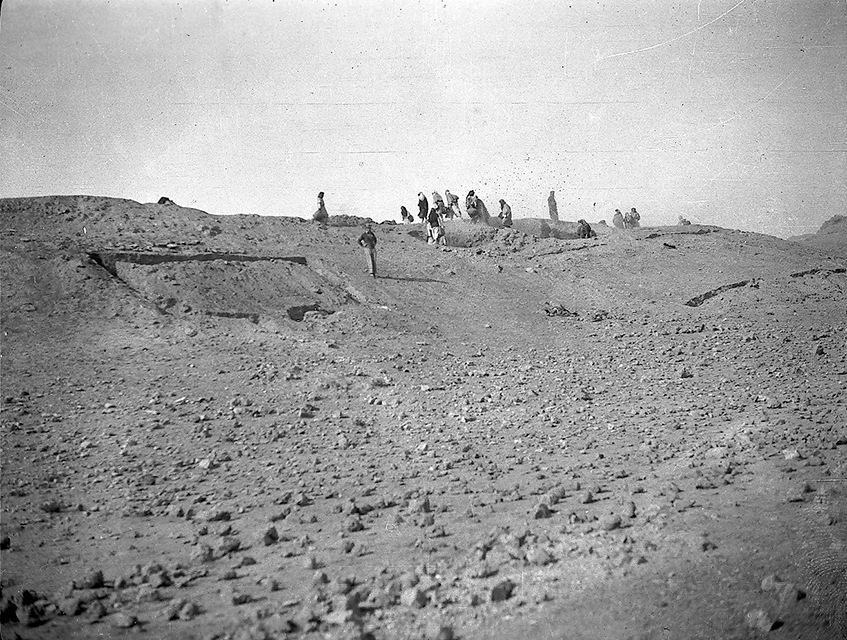View of beginning of excavation at the Synagogue in 1932
YUAG, Dura-Europos Collection, negative number dura-fII24~01

The discovery of the synagogue and its extraordinary wall paintings during the sixth excavation season in 1932-33 was astounding, and together with the discovery of the Christian building during the previous season, provided the impetus for securing additional funding and continuing the excavations rather than winding down the project as had been planned. The building was discovered during a search for painted plaster along the embankment built against the west city wall: the shallows trenches excavated to reveal the outline of the assembly hall are visible on the right of the photograph. In The Discovery of Dura-Europos, published in 1979, Clark Hopkins compares the astonishing moment of the paintings’ discovery to the time he was involved in a train wreck, and comments memorably that “Aladdin’s lamp had been rubbed, and suddenly from the dry, brown, bare desert, had appeared paintings, not just one nor a panel nor a wall, but a whole building of scene after scene, all drawn from the Old Testament in a way never dreamed of before” (page 131). Various interpretations of the paintings’ biblical scenes include their possible roles as images that represent Midrash, or other biblical exegesis, and their potential connections to liturgical activities that occurred in the assembly hall.